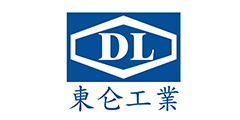Roll forming machine is an advanced technology capable of forming sheets or strips of metal into various shapes, lengths, and sizes continuously. This advanced technique involves the feeding of metal through a series of rollers till the desired shape is achieved. The machine's design and construction are intended to ensure quick and accurate production of sheet metal products.
The following are some unique features of roll forming machines:
1. Automated Operation: Roll forming machines operate using a programmable control system, making them highly automated. The control system primarily enables operators to set the required specifications for the final products, enabling the machine to achieve high accuracy, consistency, and repeatability. The automated operation also significantly reduces human labor, resulting in lower operational expenses.
2. Versatility: Roll forming machines can create many shapes and sizes of products. The ability to form various shapes makes them suitable for a wide range of industries, including construction, automotive, and furniture manufacturing.
3. High-quality output: Roll forming machines consistently produce high-quality products as they use pre-coated and pre-painted metal sheets rather than raw materials. The pre-coated and pre-painted sheets ensure conformity to quality standards, which is crucial, especially in the automotive and construction sectors.
4. Efficiency: Roll forming machines can produce thousands of meters of material in a short time. The precise and consistent output enables manufacturers to supply products to customers promptly, improving their production capacity, and significantly reducing lead times while maintaining quality.
5. Low maintenance costs: The machines generally require low maintenance costs, reducing operational expenses. Periodic checks and maintenance are crucial to ensure the machines continue to function optimally in the long term.
6. Scalability: Roll forming machines are highly scalable, meaning manufacturers can adjust the machine's production capacity based on demand. Manufacturers can add more modules, machines, and systems to increase the production capacity in line with market demand.
7. Safety: Roll forming machines are designed with multiple safety features to minimize the risk of accidents. For example, the protective guards and emergency stop features are standard across most machines. The safety mechanisms also ensure that the operators are protected from the machine's moving components, reducing the risk of injuries.
Conclusion:
Roll forming machines have revolutionized the production of sheet metal products by advancing the accuracy, speed, and quality of output. Manufacturers who invest in roll forming machines, expect lower operation costs, increased production volumes, and faster delivery times. The machines' standardization and scalability also ensure that manufacturers can seamlessly adjust the machine's production capacity and adapt to market demand. Roll forming machines have become a highly sought-after tool for industries looking to boost their productivity, quality, and safety.





